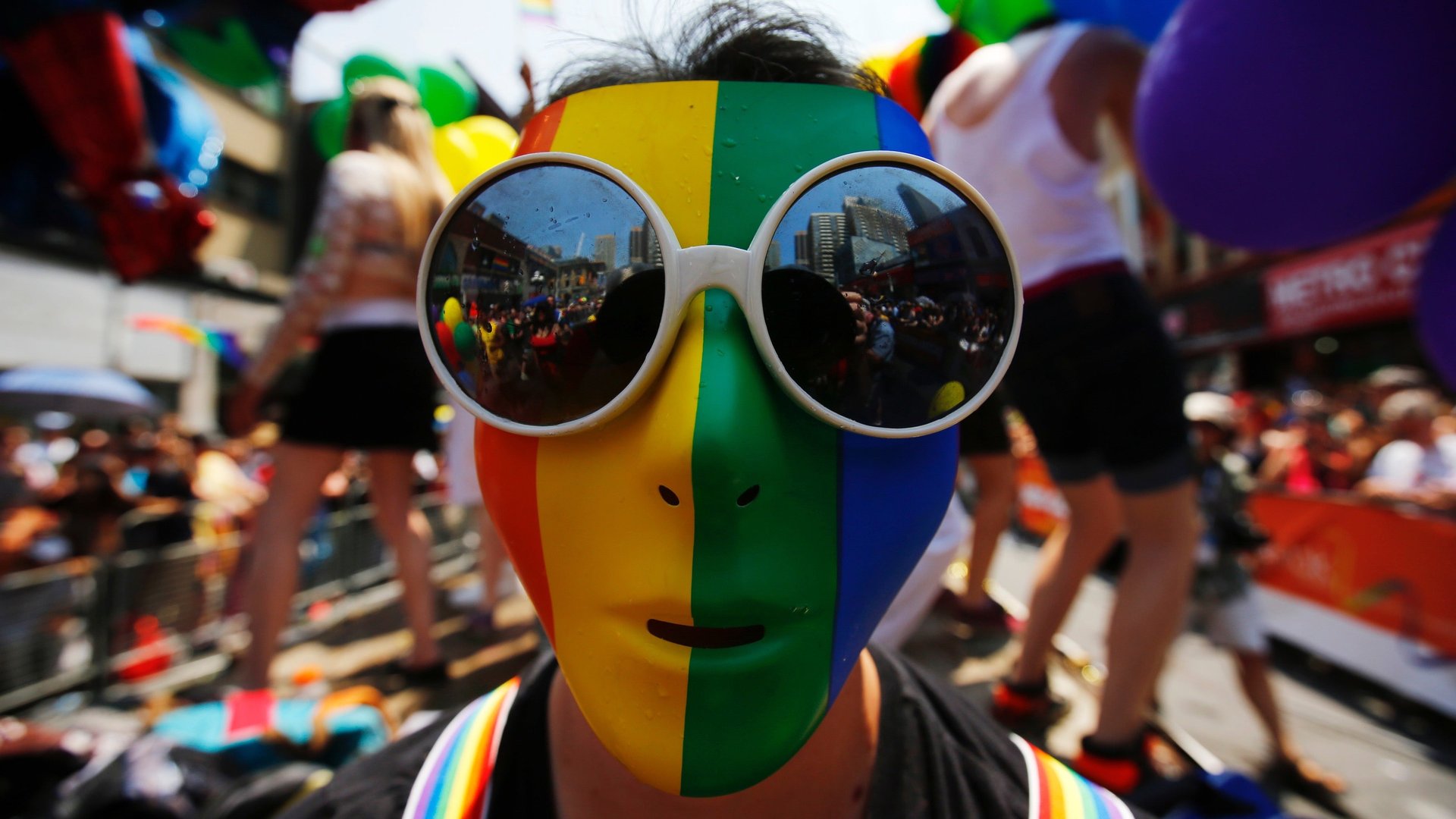Some of the world’s least progressive countries recognize transgender citizens. The US does not
In much of the world, not identifying as male or female can lead to a life plagued by discrimination.


In much of the world, not identifying as male or female can lead to a life plagued by discrimination.
In Pakistan, transgender people are often subject to brutal attacks, and victims are neglected by police and medical staff. One transgender-rights activist, Alisha, died from gunshot wounds after hospital staffers taunted her, saying she could not be treated in the male or female patient wards.
Come March, Pakistan will start to address those divisions, by allowing the country’s transgender community to identify themselves as such in its 2017 census. The census is Pakistan’s first in 19 years (its sixth overall), and the decision to include transgender as a designation stems from a petition filed by a transgender woman in November. A Lahore High Court ruled in favor of the petition on Jan. 9.
The decision adds another complex layer to Pakistan’s forays into tolerance. Just five years ago, transgender people in the country were granted the right to vote. Their entitlement to the same rights as men and women—such as the right to inherit property and assets—only dates back to 2012. In June 2016, clerics in Pakistan issued a religious fatwa (decree) deeming transgender marriage permissible… as long as both parties carried “visible signs” of being male or female.
Globally, only a handful of countries allow citizens to list a gender other than male or female on official documents, and the shortlist isn’t exactly a who’s who of progressive democracies. Traditionally conservative Nepal has been including transgender people in its national records since the 2011 census. India, which infamously criminalized gay sex, has also been accounting for its transgender population (currently around 488,000) for more than five years. The hope is that giving transgender people a legal identity will help combat ridicule and harassment.
“A matter of life and death”
While tolerance of sexual and gender diversity tends to play out in US culture, America lags behind on legal identities. Since 2010, US transgender people have been able to alter the gender designation on their passport from male to female or vice versa (with a doctor’s certification), but there are no alternative options—though at least one American has called for them. (In Australia, New Zealand, Malta, and Germany, people can mark their gender as “X” on their passports.)
Some politicians are hoping to change that. In May 2016, Arizona congressman Raúl Grijalva introduced the LGBT Data Inclusion Act, which proposes that federal surveys like the census ask voluntary questions about Americans’ sexual orientations and gender identities.
The lack of non-binary designations means no official statistics are gathered on the US’ transgender citizens, making it easy to overlook issues affecting that population. A recent survey from the American Foundation for Suicide Prevention, for example, found that more than 41% of transgender people attempt suicide—well above the national rate of 4.6%. Recent bills in North Carolina and Texas would compel trans people to use public restrooms in accordance with the gender they were assigned at birth. And during the 2016 presidential election, advocacy groups warned that nearly 34,000 transgender voters could be turned away from polling stations because of their identity cards failing to match their gender.
“It’s a matter of life and death,” actress and transgender icon Laverne Cox said last year. “On a systemic level we’re often told we don’t exist.”
The road ahead
Due to backlash against their gender identity, members of India’s 2 million-strong hijra (trans women) community live in poverty, and often end up begging or prostituting themselves. Harassment often forces transgender students in Nepal to drop out of school While the US’ struggles with social integration may not be that pronounced, America still has issues of its own. A 2011 survey (pdf) of 6,450 trans and non-conforming US citizens, conducted by the National Gay and Lesbian Task Force and the National Center for Transgender Equality, found that most had experienced harassment in school.
According to a separate study from the Gay Lesbian Straight Education Network, US LGBT students who feel unsafe at school report sexual orientation and gender expressions as among the biggest stress points.
Transgender people in the US also report disproportionately low household incomes, as compared with the overall population.
There have been baby steps. In June of last year, Oregon resident Jamie Shupe became the first person to get court approval to switch their gender from female to “non-binary.” Six months later, the Intersex and Genderqueer Recognition Project helped Sara Kelly Kennan receive an intersex birth certificate. Facebook now offers users 58 different gender options, and Tinder lets would-be daters choose among 37 options. The Common Application, used by more than 600 colleges across the country, has also provided applicants with a free-response box to elaborate on how they self-identify.
Perhaps it’s time for US government to catch up.